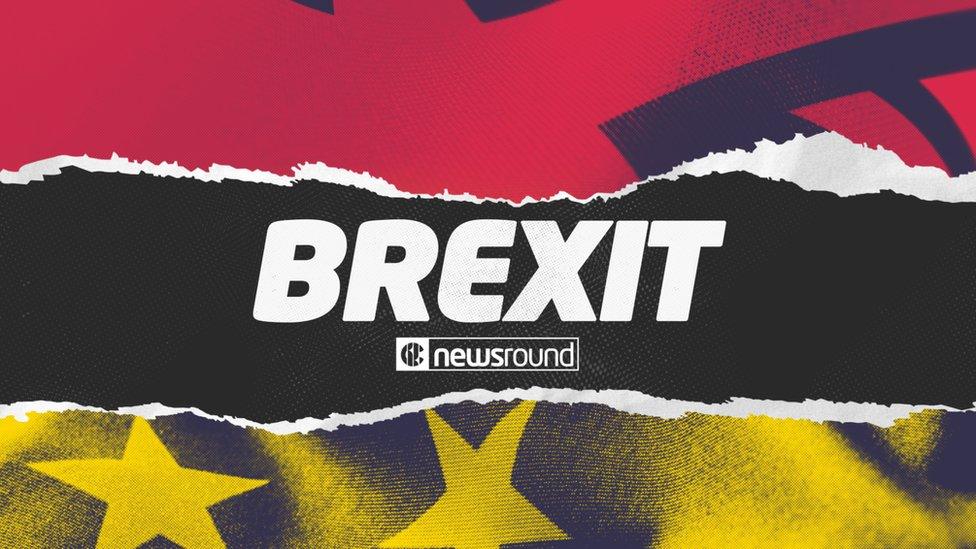Brexit: Why is Friday a historic day for the UK?
- Published
- comments

Friday 31 January is going to be a very important day in the history of the United Kingdom as it leaves the European Union.
Adults in the UK originally voted on whether they wanted to remain or leave the EU on 23 June 2016.
Over 30 million people voted in the referendum with the leave vote coming out on top, winning 52% of the vote.
Now, three years and seven months on - and following approval from members of the European Parliament on Wednesday 29 January - the UK will officially leave the EU.
Brexit: Your questions answered
However, there's still a long way to go with the UK now entering into something called a transition period, so you're unlikely to see any changes straight away.
The transition period will last 11 months. In that time the UK and the EU will hope to negotiate their future economic relationship.
How is Brexit day being marked?
There are celebrations planned for the evening of 31 January including a party in Parliament Square.
Three million Brexit coins will also enter circulation that day. The 50p coin has the words "Peace, prosperity and friendship with all nations" written on them.
But Big Ben will not be bonging to mark Brexit at 11pm - Big Ben is being renovated and the cost of getting the bell working by Friday had been put at £500,000. Campaigners tried to raise the money to pay for it but didn't manage to raise enough in time.
A £120m national festival of celebration, promoting the UK, is also due to take place in 2022, organised by the man who was in charge of the 2012 Olympic games ceremonies.
What is the transition period?
A transition basically means that the UK will continue with the EU's trade agreements but will no longer have political representatives there.
So, while the UK will no longer have any voting rights, it will need to follow EU rules.
The idea of the transition is to give the UK and the EU time to allow new negotiations and talks to take place.
Until the transition ends, most things will stay the same. This includes travelling to and from any countries in the EU.
Brexit: What do British kids who live in Europe think about Brexit?
Freedom of movement will continue and this means UK citizens will have the right to live and work in the EU, and vice versa.
Trade between the UK and EU will continue at the same price and no added checks at country borders will be added during the transition period.
The transition is due to last until 31 December 2020, at which point the UK and EU hope to have agreed on a deal for issues such as freedom of movement, travel and trade.
What could Brexit look like after the transition period?
The pink area shows which countries are currently in the EU
There are three possible outcomes following the transition period, with Boris Johnson hoping he'll be able to secure a free trade deal between the UK and EU.
Currently, the UK has a customs union arrangement between European Union (EU) countries which means that they do not have to pay taxes, called tariffs, to move goods and services between their countries - free trade.
This makes it easier for customs union countries to buy and sell products between each other, by keeping costs down and avoiding delays.
If the UK can't agree on a deal they could leave the transition period without a trade deal at all.
This would be called a 'no-deal' and could lead to a number of things happening including some border checks being re-introduced, transport and trade between the UK and the EU being affected and adults not being able to drive in EU countries without a special driving licence.
The other possible scenario is that the transition period will be extended. However, experts think this is unlikely and Boris Johnson says he has already ruled it out.
- Published16 September 2019
- Published17 September 2018
